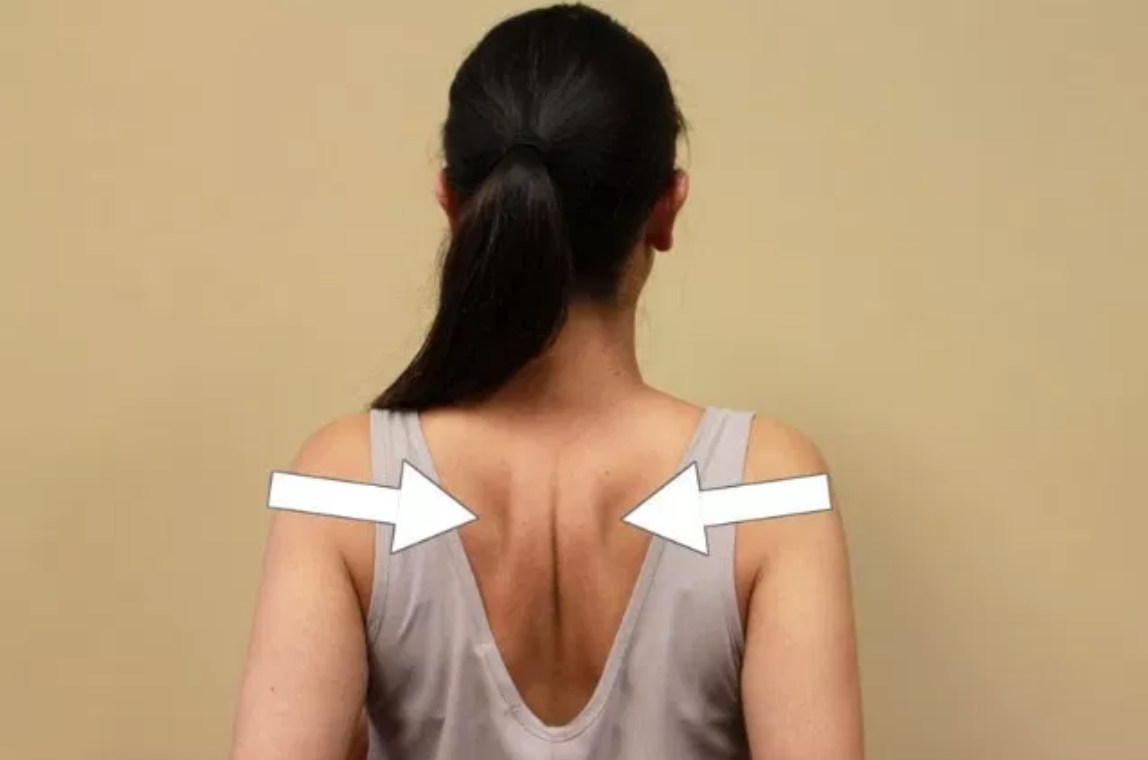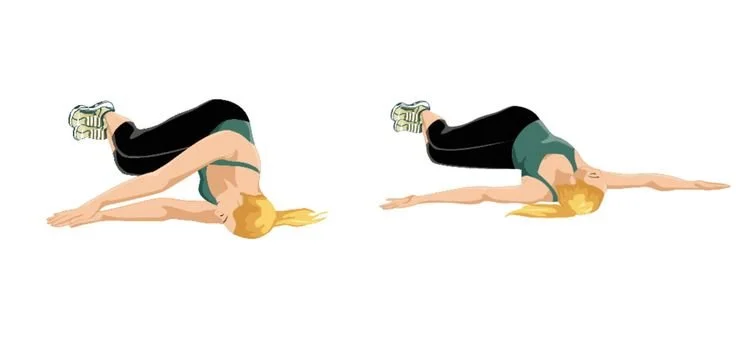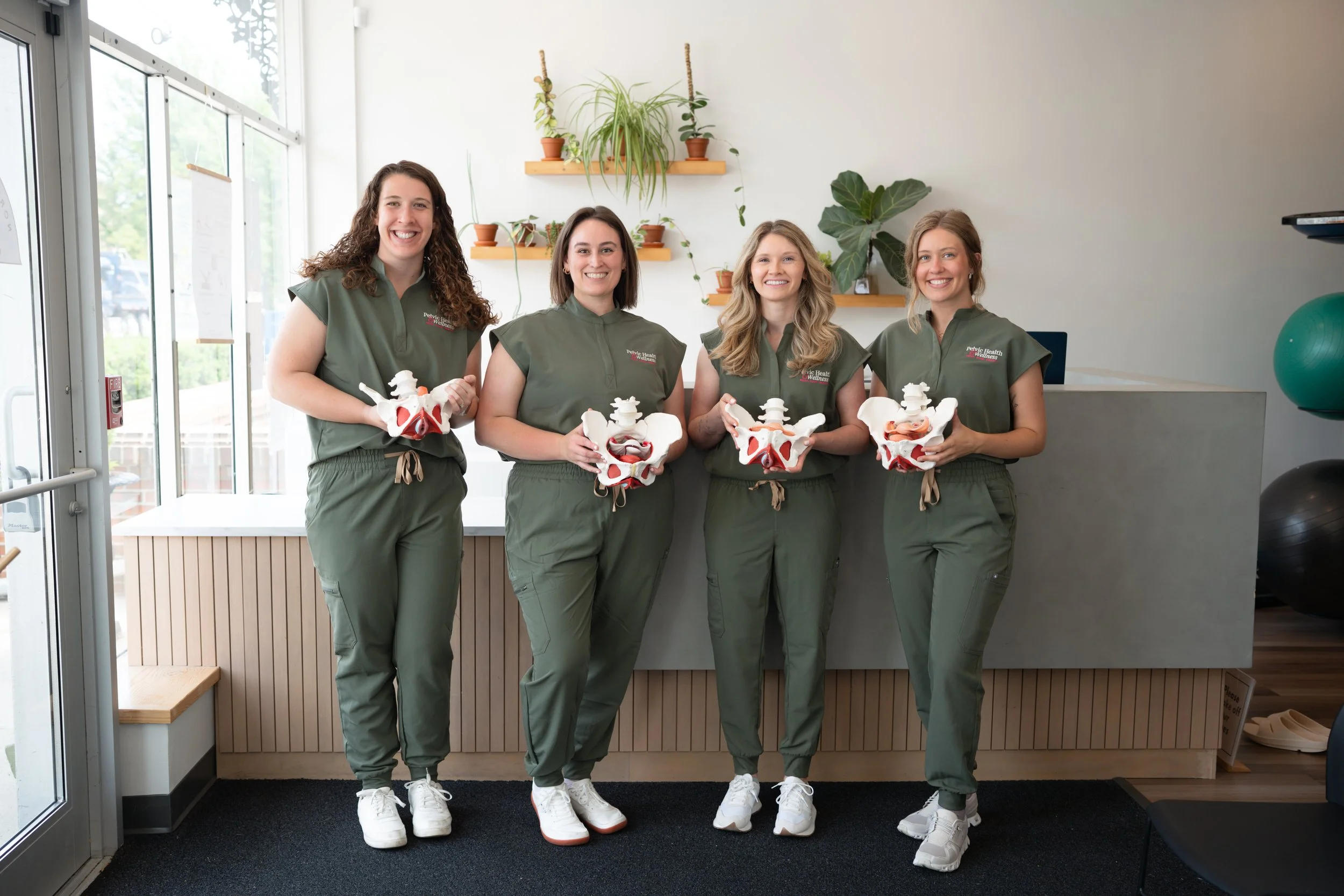Breastfeeding and Your Posture
Lactation and Breastfeeding Series (3-Part Series)
Part One: Lactation and Your Pelvic Floor: Explore how lactation impacts the pelvic floor.
Part Two: Posture and Breastfeeding: Posture and breastfeeding positions that help relieve pain (this blog!)
Part Three: Clogged Duct Management: Recognize and manage clogged ducts.
Part Two: Breastfeeding and Your Posture
Welcome back to our three-part Lactation and Breastfeeding Series. In Part One: Lactation and Your Pelvic Floor, we talked about how lactation affects the pelvic floor and why so many postpartum mamas notice changes such as dryness, sensitivity, pelvic tension, or low libido.
In Part Two, we’re shifting our focus to your postpartum posture. Because let’s face it, between long feeding sessions, pumping, holding your baby, carrying the car seat, and pushing the stroller, it’s really common to experience neck, shoulder, and back pain.
The good news? Small changes in your posture and positioning can make a big difference. In this blog, we’ll walk you through some simple exercises and breastfeeding positions that can help reduce muscle strain and support a more comfortable, sustainable postpartum posture.
Posture and Breastfeeding: Postpartum Exercises
As you go through postpartum recovery, you might notice that your posture changes to accommodate your newborn. Newborn and baby care tasks such as diapering, bathing, holding, and feeding (breast or bottle) are all performed in a very forward, rounded position for the shoulders and upper back. This can contribute to the development or worsening of headaches, neck, shoulder, or back pain, or difficulty standing/sitting up straight.
If you are noticing these changes, here are some exercises to consider.
1. Stretch the Pecs
The pecs are the muscles in the front of the chest that pull your shoulder blades forward and round your shoulders. To bring your posture more upright, these muscles need to be flexible. You can stretch these muscles with a Doorway Pec Stretch.
Doorway Pec Stretch
Stand with your hands resting on either side of a doorframe, elbows relaxed down, and take a small step forward to feel tightness along the front of your shoulders or chest. You may also notice your shoulder blades get closer together behind you. You might need to adjust how high or low your hands are for the strongest feeling stretch; it can be different for everyone. Hold this position for 5 total breaths in and out (about 30 seconds). Repeat with the other foot stepping forward.
Image credit: Medbridge
2. Strengthen Between the Shoulder Blades
To help your shoulders stay back in an upright posture, your muscles need to be strong enough to keep them there. Strengthening between the shoulder blades is crucial for maintaining upright posture and can be practiced with a Shoulder Blade Squeeze exercise.
Shoulder Blade Squeeze
With no equipment necessary, you can practice by sitting with your hands resting in your lap and pinching your shoulder blades together towards your spine like you’re trying to hold a pencil between them. Two things to watch out for: make sure your back doesn’t arch to get you into that position and keep your shoulders away from your ears. Perform 2-3 sets of 10 and hold each rep for at least 3 seconds. You can always add more difficulty by pulling against a resistance band, but the shoulder blades should always be the first thing to squeeze.
Image credit: Google
3. Spinal Mobility
Your upper back or thoracic spine has a natural forward curve, but sometimes it becomes too forward. This can lead to pain and reduced mobility. To help the thoracic spine move better, you can do an exercise called an Open Book.
Open Book Stretch
Lie on your side with your top arm straight in front of you and your legs comfortably bent and resting on each other. Reach your top arm up towards the ceiling and behind you, in a big twist, with your eyes and head following the motion. Then return to the starting ‘untwisted’ position. You can move through this motion back and forth at least 5-10 times on each side.
Image credit: Google
Breastfeeding Positions
One of the most helpful parts of this topic—especially from a pelvic floor and postpartum body perspective—is exploring different breastfeeding positions. The key idea to remember is simple: bring your baby to your breast, not your breast to your baby. This small shift can help you avoid the rounded, forward posture that often leads to neck, shoulder, and back discomfort.
Here are a few common nursing positions that can support both your comfort and your baby’s latch:
Cradle
A popular breastfeeding position that is often traditionally pictured. Consider using a pillow behind your back for support and under your elbows to reduce the strain on your shoulders. Allow your shoulders to relax away from your ears. Also, watch out for propping your baby up too high (sometimes breastfeeding pillows are too thick), which may interfere with their latch.
Image credit: Cleveland Clinic
Cross Cradle
Similar to cradle hold, but the baby’s head is now supported by your hand instead of the forearm/crook of the elbow.
Here’s a helpful tip we learned from our course with WiscoLactation: When supporting your baby’s head, try not to have your fingers at the back of the head. Instead, keep them below the base of the neck. This allows for the baby’s head to tilt back for a more effective latch.
Image credit: Cleveland Clinic
Football
This position has your baby tucked next to you and can be extremely helpful for those who have had a cesarean birth. It avoids direct pressure on the stomach and the healing scar. It can also be a good position for those with larger breast tissue because you can support the breast with the opposite hand or a towel roll.
Image credit: Cleveland Clinic
Laid back
Laid-back breastfeeding works well for babies of all ages. It can be a good first position to try during skin-to-skin contact to encourage the baby’s instinct to work their way towards your breast. It’s also a good position for those with larger breasts or a fast letdown. Try this in a semi-reclined position with lots of support behind you instead of fully lying down.
Image credit: Cleveland Clinic
Sidelying
This position can also be helpful after a cesarean birth because the baby is not lying directly on the incision site. It is also useful for relaxed or nighttime feeds. Although you can support your head with your hand as pictured here, it is preferable to rest your head on a thick enough pillow that keeps your neck in a fairly neutral alignment to limit neck pain.
Image credit: Cleveland Clinic
Bringing It All Together
Posture plays a huge role in how your body feels during the early weeks and months of breastfeeding. Small adjustments, such as stretching tight chest and shoulder muscles, and choosing breastfeeding positions that support your body, can go a long way in reducing pain and helping you feel more grounded and comfortable.
Up next in our Lactation & Breastfeeding Series: A deep dive into clogged ducts—why they happen and what you can do to manage them.
About Pelvic Health & Wellness
Pelvic Health & Wellness was built with you in mind. We practice whole-person, individualized pelvic floor physical therapy in a caring and safe environment. Our physical therapists specialize in treating pelvic health concerns such as pelvic floor dysfunction, bowel and gut health, pelvic pain, pelvic organ prolapse, constipation, incontinence, fertility, and various pregnancy and postpartum-related conditions.
We understand that being ready to talk about and address your pelvic floor wellness concerns comes from a place of strength. We are here to support and encourage you on your journey back to health so you can return to doing what you love! If you are ready to take the first step in reclaiming your pelvic health and wellness, don't hesitate to get in touch with us today.










